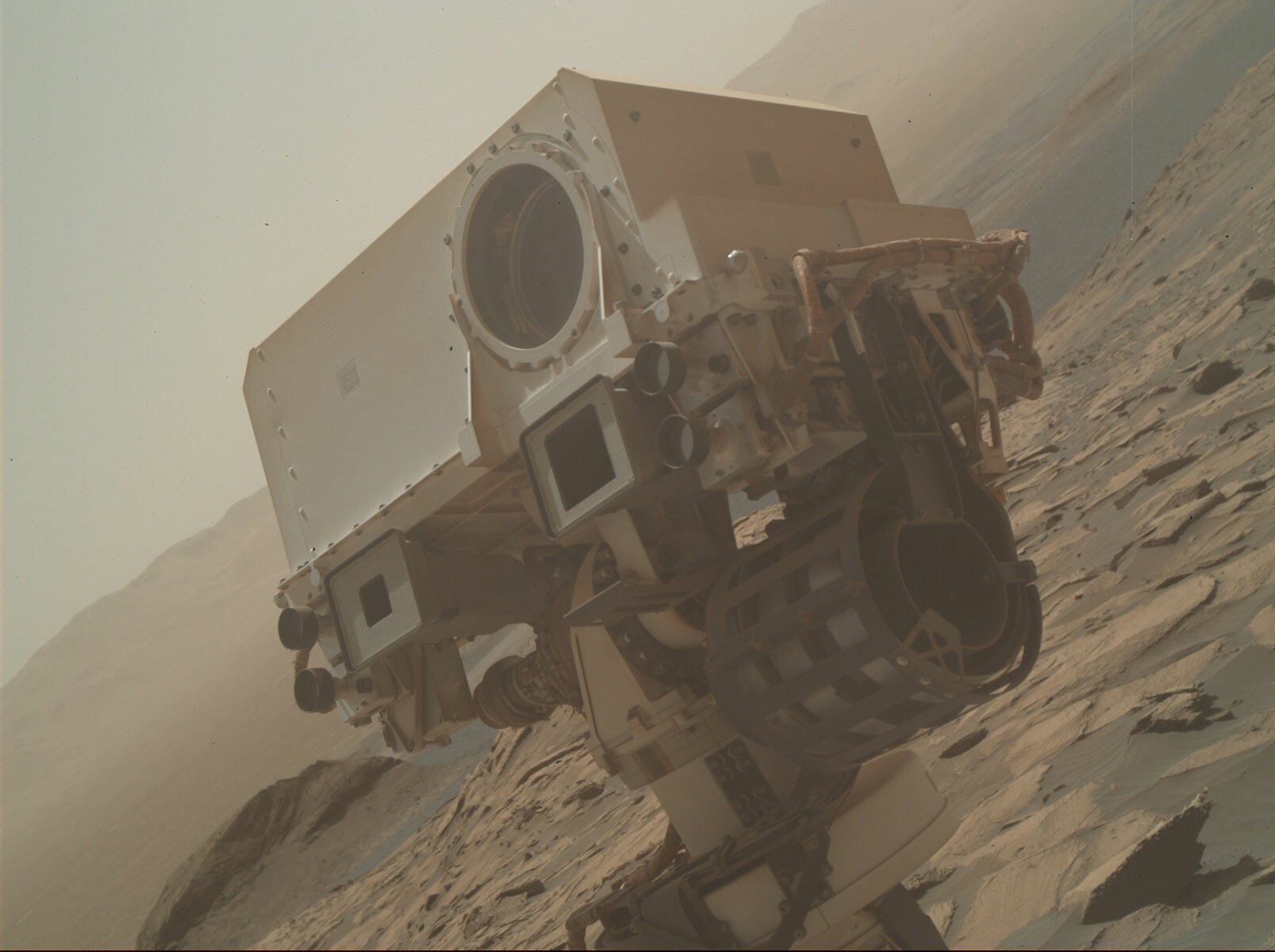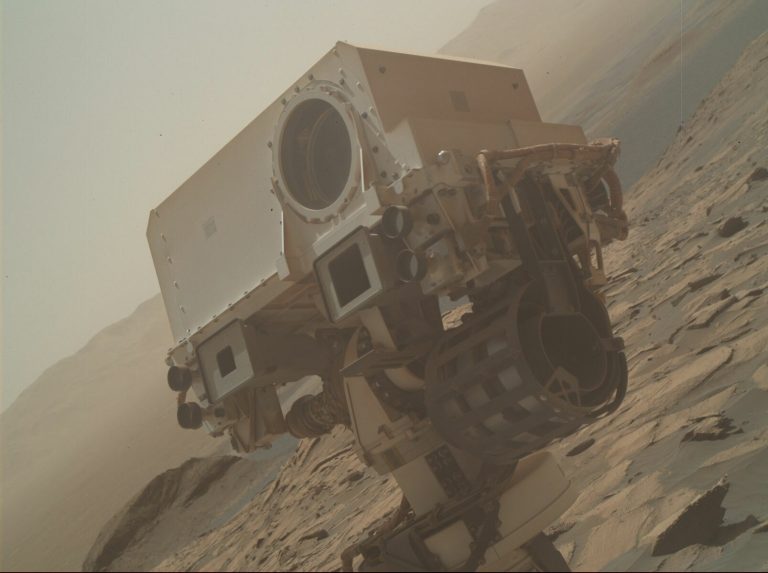
Mars just got a blast of radiation.
The sun is at the peak of its 11-year solar cycle, which means it’s more likely to emit bursts of energy and particles into space. Recent solar storms have stoked glorious aurora on Earth, and on May 20 the strongest class of solar flare — an explosion of light (visible light, X-rays, and beyond) from the sun — hit the Red Planet. Right after, another type of solar explosion called a coronal mass ejection — a blast of energetic particles from the sun’s surface — reached Mars.
These particles hit the Martian surface, and NASA’s Curiosity Rover captured the effect, which you can watch below.
“During the May 20 event, so much energy from the storm struck the surface that black-and-white images from Curiosity’s navigation cameras danced with ‘snow’ — white streaks and specks caused by charged particles hitting the cameras,” the space agency explained in a statement.
Unlike Earth, which has a magnetic field that traps energetic particles in the high atmosphere, shielding the surface (and us) from such radiation, Mars lost its protective magnetic field long ago. So these charged particles can impact the Martian ground.
This was the most radiation that Curiosity, which landed in 2012, has ever measured.
“If astronauts had been standing next to NASA’s Curiosity Mars rover at the time, they would have received a radiation dose of 8,100 micrograys — equivalent to 30 chest X-rays,” NASA explained. That’s not in itself a “deadly” amount, the agency said, but certainly something humans would not want to be exposed to, nor ever repeatedly exposed to.
But NASA has realistic desires and designs to send astronauts to Mars as early as the 2030s, an ambitious part of its Artemis program (which will first return humans to the moon, as soon as 2026). If a massive blast of solar particles were to hit unprotected Mars, NASA would want astronauts to seek shelter, ideally underground in a Martian cave, pit, or lava tube.
“Cliffsides or lava tubes would provide additional shielding for an astronaut from such an event,” Don Hassler, a scientist at the Southwest Research Institute who leads Curiosity’s Radiation Assessment Detector program, said in a statement. “In Mars orbit or deep space, the dose rate would be significantly more.”
Beware, future Martians.






















0 Comments